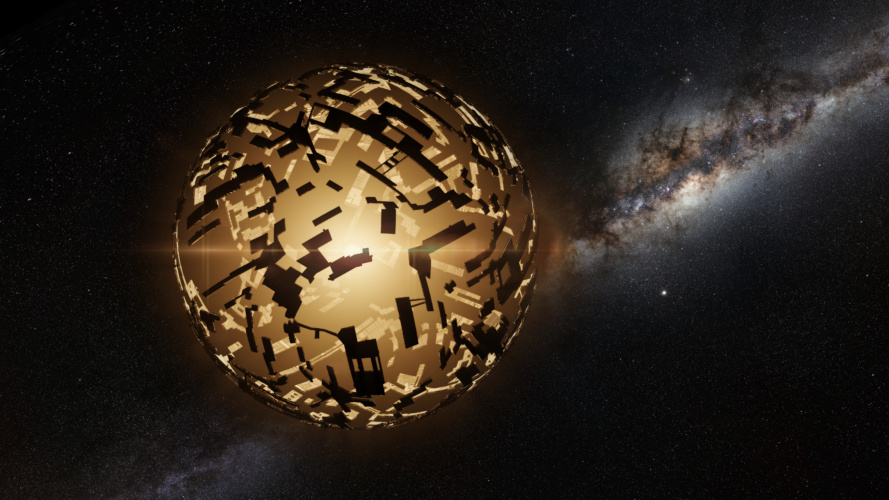As this is my first column of the New Year, I want to take a look at some really science fictional examples of engineering. I’m talking about the big stuff. The stuff that’s theoretically possible, but about which we can currently only dream.
Take space elevators, for example. First conceptualised by Konstantin Tsiolkovsky in 1859 and then improved upon by the Russian engineer Yuri N. Artsutanov a century later, a space elevator is a tower or cable that stretches the 35,786 kilometres (22,236 miles) from the Earth’s surface to geostationary orbit. Once constructed, this elevator would allow cheap and efficient access to space. Payloads would ride up in elevator cars rather than have to rely on dangerous and expensive rockets. Construction of a space elevator would begin in orbit, with the cable being slowly extruded from a space station until it reached the surface. At the same time, a second cable would be deployed behind the station to act as a counterweight. Of course, both these cables would have to be unreasonably strong, but recent proposals for the production of macro-scale single crystal graphene have led the International Academy of Astronautics to conclude that we’re much closer to being able to build one than most people think.

Next up, I want to talk about ringworlds. You might be familiar with the basic idea from the video game Halo or the movie Elysium. As the name suggests, ringworlds are wheel-shaped structures in space. They are spun to produce simulated gravity on their inner surface. In his ‘Culture’ novels, Iain M. Banks referred to them as ‘habitats’ and suggested that once we were able to automate their construction, they would essentially be free to build, and we could convert any spare matter (such as comets or asteroids) into liveable space.
In his 1970 novel Ringworld, the American author Larry Niven postulated a version of this concept with a diameter of 186 million miles—wide enough that it could be built around a sun, which would then provide light and heat for the inner surface. Of course, in order to hold together, any such structure would need to be made of unreasonably strong material, and would need some mechanism to stop it drifting off-centre and brushing up against the sun at its centre. However, could one be built, it would provide almost endless room for expansion, boasting a surface area equivalent to three million Earths!
If you think that’s impressive, you’re going to love Dyson Spheres.
Like Niven’s ringworld, a Dyson Sphere completely surrounds its parent star. But where the ringworld only circles the star’s waist, a Dyson Sphere completely encapsulates it. The idea was first described by Olaf Stapledon in his 1937 novel Star Maker before being popularised in the 1960s by the theoretical and mathematical physicist Freeman Dyson. His thinking was that sooner or later, a growing civilisation will eventually need to trap and use one hundred percent of their star’s energy output, and the only way to do that would be to build a shell around the star. Now, this shell might be an actual sphere of solid material, or a cloud of densely packed smaller habitats; either way, they would also provide a huge amount of potential living space.
CLICK HERE FOR MORE SCI-FI EYE COLUMNS
Some researchers have actually started searching for alien Dyson spheres. Such objects would obscure all the light from their star but would radiate in the deep infrared. In fact, when KIC 8462852 (or Tabby’s Star) inexplicably dipped in brightness in 2015, some members of the astronomical community actually proposed the on-going construction of one of these megastructures as a possible explanation.
But even a Dyson Sphere wasn’t impressive enough for Ray Bradbury, and he decided to expand on the concept by postulating a nested series of spheres he called a ‘Matrioshka brain.’ In this model, the innermost sphere would collect the sun’s entire energy output and use it for computing. The waste heat produced by this computing would then be collected and used by the next sphere, which in turn would generate its own waste heat for the next sphere to collect, and so on.
Obviously, a computer of that size with access to that amount of energy would be more powerful than anything we can easily visualise right now. Not only would it potentially become a conscious entity in its own right, it would also be capable of hosting detailed and convincing virtual simulations that would be almost indistinguishable from the real world. It would certainly have the processing power to run perfect simulations of something as relatively simple as a human consciousness. In fact, you could be in one right now and not even know it.
Gareth L. Powell is a multi-award-winning science fiction author. Follow him on Twitter and Instagram: @garethlpowell










Water Sector Talent Exodus Could Cripple The Sector
Maybe if things are essential for the running of a country and we want to pay a fair price we should be running these utilities on a not for profit...